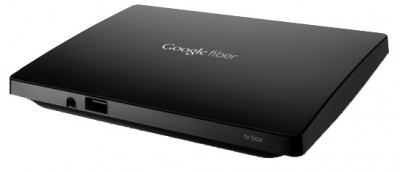What’s wrong with our internet?

The internet is coming! The internet is coming!
Luckily I’m not the only one who feels this way and in early 2010 Google announced that it wanted to build an experiment fiber network in a city and opened their virtual mailbox to submissions and suggestions from various city and town governments. Well over 1000 submissions were sent from cities and groups longing for faster, cheaper, and more robust internet and Google announced Kansas City, Kansas as their fiber network choice in early 2011.
I’ve followed their project closely, especially since Verizon decided they would not expand their FIOS fiber network, and there have been quite a few ups and downs as the project progressed. I don’t live in Kansas City, but I want my High Speed Internets and Google seems the only solution in the near (or not so near) future.
Last week Google made a pivotal announcement. Google Fiber is a GO! What a great surprise for any geek, but their announcement was so much more. Google will be bringing 1Gbps internet speeds – that is 170 times faster than the average U.S. broadband speed) to homes. Your home! In addition Google will be offering a TV service similar to AT&T Uverse – a total broadband/entertainment package -, but at a very reasonable price. In fact, a price that should make other internet and TV providers shake in their boots. If Google can get this off the ground we could actually have a situation where competition forces costs down and speeds up for consumers. I love a good industry shakeup!
Google Fiber – the details
Google is now accepting pre-orders through September 9th and the neighborhoods with the highest number of pre-orders will be the first to have the service installed. I can see Kansas City geeks going door to door in their neighborhoods talking neighbors into pre-ordering – I know I would!
Google fiber has three plans and premium (HBO, ShowTime, etc) channels will be extra. None of that tiered pricing for channels you never watch. Installation is $300, but will be waived in many cases.
Gigabit + TV – $120/mo which is about $40 less than most comparable services. $300 installation waived. Heck $120 won’t get you 50Mbps in some areas.
Gigabit only – $70/mo which is $10 to $20 than most plans offering only 6Mbps to 12Mbps. $300 installation waived.
Free Internet – Customer pays the $300 installation fee and receives free internet for 7 years. Payment may be made monthly at $25/mo for 1 year. No indications whether this will be the full Gigabyte service yet, but at the price (free) it’s a steal at almost any speed.
What does $120 per month get you on Google Fiber?
- 1 Gigabit download and upload speed (170 times faster download speed than the current U.S. average)
- No data caps (Good job, Google)
- 1 Terabyte of online storage
- Roughly 160 TV channels
- Google Fiber TV box with bluetooth
- Google Fiber Network box (4 port 1Gbps wired/wireless b/g/n router)
- Google Fiber Storage box (DVR that can record approx 500hrs of TV and 8 shows at once)
- A Google Nexus Tablet (which also functions as a remote control)

The features Google is rolling out with this service are extraordinary by current cable/ISP standards and this is especially true at this price point(by comparison Verizon FIOS offers 75 HD channels and 25Mbps for the same price).
Google Fiber FTW
I wish nothing but success for Google in this endeavor and hope the community supports their effort. This really could be the one thing that prompts cable companies to actually improve their service. In the long run this could be lead to a huge economic boom for the Kansas City area and, through competition, the rest of the U.S.
My inner geek is stoked! I’m roughly 500 miles away from Kansas City. How long will it take Google to build their infrastructure out to my town? Anyone know of a good job in the Kansas City area? (grin)
If you would like to find out more about Google Fiber, the technology behind it, and the events as they develop please visit Google Fiber’s web page.



Great in theory Dave,but current servers will likely never deliver at speeds anywhere near that.
I am thinking this dotTech article explains it pretty well-check Max Ross reports to Gizmodo
> http://dottech.org/web/75260/will-users-really-get-1000-mbps-speeds-on-google-fiber-no-they-wont/ <
"Bandwidth is cheap"- not so sure I can agree with you there either Dave.After eight years with Hughes Network Systems,many of our hopes wre dashed by the expense of bandwidth.
Chuck, I don’t disagree that many hosts do not have 1GB capacity – never have as it’s a given. I do, however, see plenty of benefits. Most people are paying similar prices for 6Mbps service and if multiple people in the household are using that service it will surely suffer. Heck, a single reasonably compressed HD video feed is around 6Mbps. I have 10 devices connected to my network and without QOS it is easy for one device to adversely affect everyone else on the network.
The immediate improvements for most everyone will be speed. Even if they don’t connect to a host with 1Gbps speed they will more than likely connect faster than they did before. This will be even more evident for those with multiple devices attempting to share the same bandwidth.
While the majority of today’s hosts and services aren’t capable of 1Gbps the wide adoption of 1Gbps connections on the consumer side is likely to result in the increase of capacity and services on the far end. Things like richer media, better streaming, and services that we haven’t even imagined yet all become possible.
The absolute biggest win I can see from Google Fiber is competition, which means more choices, more value, and better service for everyone.
As for bandwidth pricing – everything I’ve read shows IP transit costs are decreasing year to year, and have been for the past 7 or 8, often exponentially.
telegeorgraphy.com
WirelessMoves
Telecom news
I really, really hope that Google continues with this and ends up expanding all over, and that it’s a BIG successs. I hope everyone will have the option of getting this installed, unlike FIOS which stopped building out. When they put out the word for applicants, I had actually submitted an application/request for my town and tried to get my town involved, but my town officials showed no interest whatsoever. I say bring on the competition!!
We’re in the UK and just reduced our cable (FTTC) speeds from 50mbs to 20mbs – to cut cost and because we weren’t getting the 50mbs at ‘peak times’ anyway. We have seen very little change in the service.
One of our aunts lives in North California and is stuck with dial-up at stone-age speeds costing about the same as our broadband.
The real difference is that we live in a City and she lives in a rural area. In both countries it is/will be non-economic to service 10 to 20% of the population due to the cost of laying cable.
If Google had faced the challenge of a rural area this may have been a ‘breakthrough’. In a city it seems they have taken the easy way to wave a flag. What happened to the high speed wireless connections that were going to make cable obsolete?
For comparison we were getting 50mbs download which would have been upgraded to 120mbs later this year (at no extra cost) and there are very few uses that would require a 1 Gigabit connection for domestic use – I exclude P2P for ‘obvious reasons’. For this reason ISPs feel that they are ‘justified’ in overselling by many times what their network will really support at ‘peak times’ – great for insomniacs but bad for normal people who work for a living.
I think my assessment of Google’s effort would be ‘Could do better’.
Jon
Jon,
I don’t disagree with you. Right now the services available on the Internet really don’t require 50 Mbps download speeds. But let me compare this to applications and RAM usage. Back in the early 90s, computer and Operating Systems accessed only 640k of RAM. To go beyond this, we had to play with added features such as Extended Memory. Despite this, application developers were still able to provide relatively robust Office Application suites. But as computers evolved, operating systems were able to allow applications to access larger memory allocations. Application developers began designing applications that used that extra memory. Just try to run Office 2007 on a system with only 512 MB of RAM and feel the pain.
To quote Field of Dreams, “If you build it, they will come.”
What Google Fiber is doing is similar. All the internet content today is designed for the currently available download speeds of the majority of consumers. Enter the massive increase in smart phones. 4G LTE has been a drastic improvement in what content can be consumed on a mobile device, but in a way, is a push to provide services on a system which is technically slower than regular ISP speeds. But if what Google is offering is successful, new developers will be pushing new content that will use that extra bandwidth. We won’t see this content right away, but as more people adopt Gbps connections, the content will follow.
I like to think of myself as a consumer advocate against the big corporations, and I’ve lived in rural areas where the bandwidth offering was deplorable. “The Last Mile” has always been challenging to internet service providers, if not technically, then at least from a business perspective. What Google is exploring here does not address those challenges for people living in rural areas. What we’re talking about is a fiber connection in that Last Mile. Consider that laying fiber is an investment; and a for-profit business, like Google or any other Internet Service Provider, is providing these services for profit, and if there is no return on the investment, it doesn’t make good business sense.
According to the Stark Insider article on Google Fiber: http://www.starkinsider.com/2012/07/cable-game-enter-google.html
“50 customers in a given neighborhood need to sign up for the new service, before the plumbing begins.”
Of course, this is a new consumer service offering, and in the beginning of any new type of service, the requirements are subject to change radically and quickly. We’ll just have to wait and see what happens when the process begins, and how the business plan will change over time in the following months.
Now, where does that leave people living in rural areas, where we would be lucky to find 5 or 10 customers in a given neighborhood? Answer: with nothing, at first. The initial cost to lay out fiber in the Last Mile for just a few people living in a rural area right now far exceeds any expected return, and any company that attempts to do so now will be out of business before long. The initial deployment of any new backbone technology will always be around urban centers, where there will be an expected return on the capital investment. However, the added demand for fiber, ideally, would cause fiber-optic manufacturers to look for a cheaper way to produce fiber. And with reduced costs for the fiber itself, it ‘may’ allow ISPs to push fiber out to areas where today is doesn’t make economic sense. And even for those customers where we might find fewer than 5 in a given neighborhood, perhaps ISPs can find a way to get the content providers to help subsidize the costs of the fiber outlay. Or, another solution may present itself. The future is yet to be written here.
So while I agree that Google is not yet addressing the 20% of the population living in rural areas, my response is: give it time. Let them pursue the urban areas and see where this goes. There may yet be a big win for rural dwellers not long after.
And having said all that, I have a friend, a graduate from Georgia Institute of Technology, who has been working to help improve Satellite Internet technology. Satellite services tend to be expensive, consume more power, and are also prone to high latency. But major breakthroughs in this technology could one day render fiber obsolete. Do we wait for some breakthrough in satellite technology when we have the technology today to advance the internet as a whole? Google says no.
Onward and Upward,
Jason
Ahhh Dave, you beat me to it. Say yes to Google Fiber! (Kansas City, you are the object of my Envy!)
But for those who can’t wait for something better than the usual fare, and for whom FIOS is not an option, many cable providers have been able to offer a higher tier of cable internet services. It is usually branded with the term Extreme, Xtreme, or Ultimate.. But really, they are talking about the DOCSIS 3 standard for cable internet, which is a bonded cable internet connection. I’m currently using the the Time Warner Road Runner Ultimate brand; and for about $50 bucks a month, I’m getting 30 Mbps down and 5 Mbps up. It is theoretically capable of over 200 Mbps down and 108 Mbps up, but Time Warner doesn’t advertise those speeds, at least not in my area.
Read about DOCSIS here: http://en.wikipedia.org/wiki/DOCSIS
Granted, Google Fiber is going to blow even that out of the water, and I’m excited for the future of internet.
2 notes of interest:
Most technicians will generally agree that about 20-25% of the bandwidth of any given network is overhead (open for debate). For example, when I’m downloading something, the far end is going to send only so much data, and then wait for the request from my system that it has received said data, and please send more. So, if 25% of my bandwidth is generally control, signalling and other TCP/IP protocol overhead, that means the overhead of Google Fiber should be about 250 Mbps? Wow. Their overhead alone is 8 times my entire “Ultimate” broadband bandwidth. Wow again.
Finally, the best tip I can give anyone choosing a broadband connection is this: your UPLOAD speed limits your download speed. I can’t begin to tell you the number of complaints I’ve handled from people who purchased a connection promising 1 Mbps, 5 Mbps or 10 Mbps download speeds, but they rarely, if ever, see anything close to those speeds. Further research uncovered that their upload speeds were 128Kbps, 256 Kbps or 512Kbps.
128 Kbps? I could get that on my phone line! (think ISDN or 2x56k dial up).
With upload speeds so low, the system has only so much room to be able to send the signals necessary to trigger the far end to send more data. So the Internet Providers are able to advertise high download speeds, but they have effectively capped the data by the low upload speeds. Often, you’ll have to dig into the site to find out what the upload speeds are, and in some cases, they are not even provided (and I had to call to find out.) So when choosing your broadband provider, definitely find out what the UPLOAD bandwidth is. I generally recommend that your Upload bandwidth should be around 20% of your download bandwidth, when dealing with internet connections less than 10 Mbps download.
Granted, if all you do with your computer is drive it to church on Sundays, you may well be happy with only 128 Kbps upload. But if you like streaming Netflix HD, playing MMOs, or anything else where bandwidth affects the user experience, then you are going to be a lot happier with your internet experience using the higher upload speeds. So when purchasing, make your decision based on the UPLOAD speeds, not the download speeds they advertise.
Over 10 Mbps download connections: the upload bandwidth can drop below 20% based on the type of traffic and internet services currently available. But as Dave mentioned in one of his replies, the dawn of Gbps internet may lead to the creation of new services we can’t even imagine yet, which will require much heavier bandwidth capabilities. That time has not yet arrived, but I’m excited for the future.